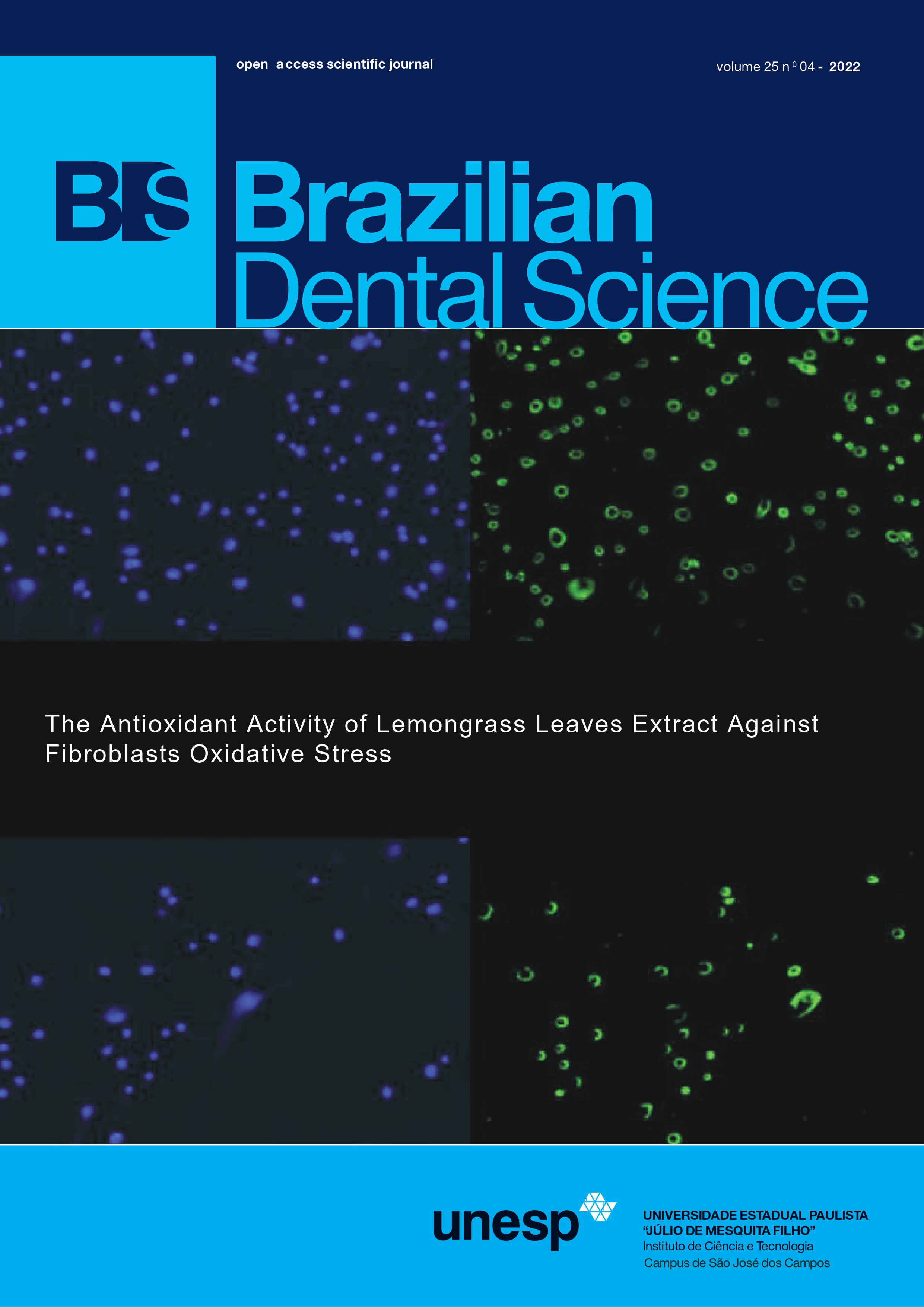Fiberglass versus cast metal posts: a practical review based on mechanical properties
DOI:
https://doi.org/10.4322/bds.2022.e3442Abstract
The current review aimed to compare the mechanical properties and clinical behavior of fiberglass and cast metal
posts. It included in-vitro studies, finite element analysis, clinical studies, and systematic reviews that evaluated
fiberglass and metal posts with reliable methodologies. The reports in the literature diverge on tooth failure modes
and stress distributions in the root according to different posts. Investigations suggest that fiberglass posts are
preferable because their elastic modulus is similar to dentin. Other studies mention that the flexibility of fiber posts
may damage the interface. The fracture load values of different studies could not be compared. The presence of a
ferrule seems beneficial. Cast metal posts provide higher characteristic strength to the set but with more unfavorable
failures. Intraradicular posts with a lower elastic modulus produce more stress between the cement layer and dentin.
In conclusion, fiberglass and cast metal posts can be used with a ferrule. Cast metal posts seem more appropriate
for weakened teeth. The presence of a ferrule benefits the system. Weakened teeth tolerate higher loads when
restored with cast metal posts, but when these posts fail, the only solution is tooth extraction. Clinical follow-ups
cannot yet detect differences between the survival rates of intraradicular fiberglass and cast metal posts.
KEYWORDS
Fiberglass; Post and core technique; Dental prosthesis; Mechanical tests; Finite element analysis.
Downloads
Downloads
Published
How to Cite
Issue
Section
License
Brazilian Dental Science uses the Creative Commons (CC-BY 4.0) license, thus preserving the integrity of articles in an open access environment. The journal allows the author to retain publishing rights without restrictions.
=================




























